Showers with bright intervals.
The larvae of Nematus pavidus - the Lesser Willow Sawfly - hatched yesterday (11th). The eggs are laid in great numbers and the larvae will stay on the same plant until most of the leaves are stripped. I'm going to track this colony for as long as I can.
On the left, 1st-instar larvae at 4 mm long. On the right, 2nd-instar larvae at 6mm long.

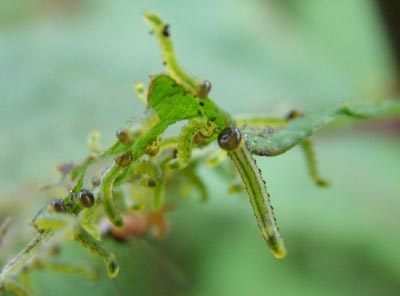
This will give some idea of the damage caused by the hundreds of larvae on each leaf.
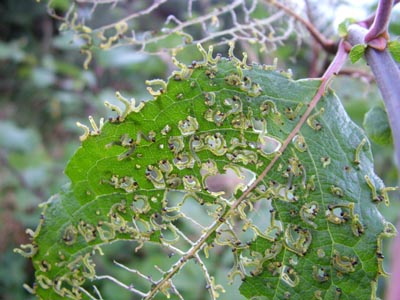
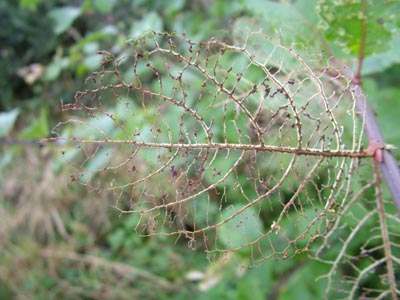
Once a leaf is exhausted, the larvae move along the branch to the next unoccupied leaf.
Already the predators are finding this rich source of protein. On the left, a tiny Ichneumonid apparently laying eggs into the live larvae, and on the right the nymph of a carnivorous bug that I disturbed while it was eating one of the larvae.
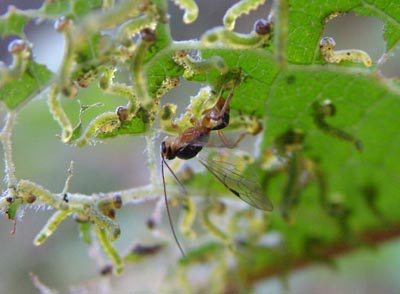

I'll show updates from this colony each day.
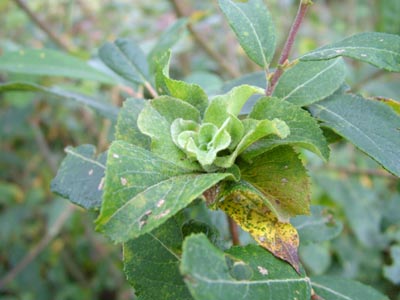 The Willow Cabbage
gall - made by the Rabdophaga cinerearum midge - has started to
form. The female fly lays her egg on the terminal shoot of the branch and
the grub eats its way inside the shoot. It then gives off hormones that
stop the branch growth, but allows leaf development to continue. This
creates a strongly-compressed lump of leaf tissue that it excavates and
uses as a shelter (and food supply) as it develops.
The Willow Cabbage
gall - made by the Rabdophaga cinerearum midge - has started to
form. The female fly lays her egg on the terminal shoot of the branch and
the grub eats its way inside the shoot. It then gives off hormones that
stop the branch growth, but allows leaf development to continue. This
creates a strongly-compressed lump of leaf tissue that it excavates and
uses as a shelter (and food supply) as it develops.
The affected branch is some 20 cm. shorter than the normal one at the top of the picture.
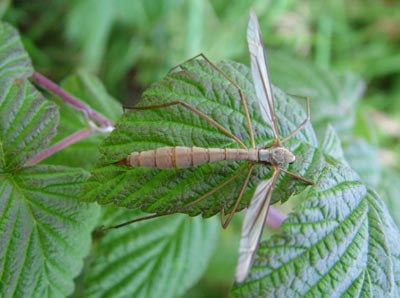
A female Tipulid (can you have a female Daddy Long-legs?) resting on Raspberry.
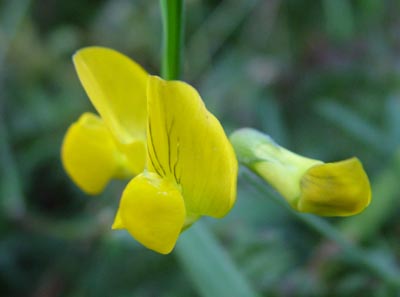
Meadow Vetchling - Lathyrus pratensis - is making a late push with new flowers appearing after a summer rest.
I was just checking the ferns to see how they were doing. These are the sori - spore-producing structures - of Male Fern.
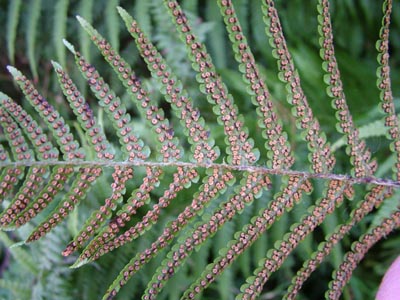

A couple of Raspberry plants are still putting up new flowers.